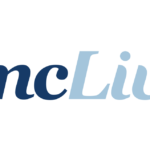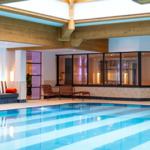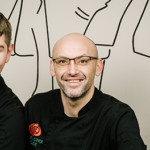
Makerspaces bridge the gap between abstract knowledge and the practical skills to build things that help our world function. Running a makerspace can be challenging and expensive, but schools that do so often see rewards in increased student engagement, collaboration, and enthusiasm for problem solving.
To learn more about how K–12 schools incorporate making in the classroom, I interviewed three teachers who run parochial school-based makerspaces:
- Reyce Krause: Ma’ayanot Yeshiva High School for Girls, a Modern Orthodox school in Teaneck, New Jersey.
- Dori Friedman: St. Matthew’s Parish School, a co-ed Episcopal middle school in Pacific Palisades, California.
- Barb Noren: Pressman Academy, a Conservative Judaism elementary school in Los Angeles, California.
Each took an unconventional and idiosyncratic path to acquire their skills, but they share a high degree of dedication and persistence, a desire to keep current with new tools and technologies, and the flexibility to allow their students to work in ways that best suit their learning styles. It’s worth noting that private schools generally have more funding and flexibility than public schools.

Reyce Krause
The boxy, industrial exterior of Ma’ayanot Yeshiva High School for Girls is a deceptively dull cover for the energetic milieu of animated young women inside who converse brightly as they walk between classes. The existence of a well-appointed makerspace in a Modern Orthodox Jewish girls’ school seems similarly incongruous at first, but this school’s mission statement mixes tradition and community with an awareness of the students’ responsibilities to the world around them and prioritizes acquiring skills to thrive in an evolving society. Ma’ayanot students learn a core set of technical skills and apply them as expressions of their creative souls and spirits — the tzelem elokim, a Hebrew phrase that means the “divine image,” imbued in every person — with a sense of their responsibility to be divine partners in improving the world.
Reyce Krause is Ma’ayanot’s Director of STEAM Curriculum and runs the makerspace. She began her tenure here as a conventional math teacher. Inspired to give her algebra class an applied lesson on parabolic curves, she reached out to a local Home Depot and convinced them to provide materials to build a parabolic cooker. She took her students to the school parking lot, pointed the cooker at the sun, and placed a newspaper in front of the reflected rays. The abstract concept of focal points transformed quickly into tangible experience as the paper burst into flames. “This was the first time the girls finally understood that math is just a language describing how the world works,” Reyce recalls. “It was just so powerful. They just loved it.” The cooker still hangs in a corner of her classroom.
Inside the bright and airy STEAM classroom, four UltiMaker 3D printers line one wall along with a laser cutter. Construction tools ranging from soldering irons to sewing machines are easily accessible, as are the well-organized drawers filled with construction materials and electronic components. An old-fashioned gumball machine is whimsically filled with hundreds of bright-colored LEDs. Reyce’s desk and the nearby sideboards are covered in attractive DIY project builds, many reproduced from online tutorials and Make: magazine articles.
Reyce acquired her college mathematics degree decades after finishing high school, waiting until her eight children were almost grown. She was hesitant when Ma’ayanot’s principal approached her to develop a STEAM program. She’d never worked with electronics.
“We started off with paper circuitry, which was fun. I had never created a circuit,” Reyce says. If information was unclear or hard to come by, she reached out to makers and experts she found online, who were often generous with their time.

Since those first simple lessons, Ma’ayanot’s STEAM program has greatly expanded to include two years of engineering classes in 9th and 10th grades. Tenth-graders form small groups to participate in a program called Making a Difference. Each group is paired with a young student at a partner school who has physical impairments and/or learning disabilities. The Ma’ayanot students are challenged to manufacture a customized toy to engage the child and help them reach developmental milestones.
The students interview the child, their teachers, and caregivers to learn their likes, dislikes, and developmental needs. They determine what interactive features best suit their child’s capabilities. Does the child have the dexterity for a toy with push buttons, or would proximity detection with a distance sensor be a more practical interaction mechanism? They’ll use a Raspberry Pi Pico, and possibly add NeoPixel LEDs, servos, or MP3 breakout boards to respond to a user’s actions with visual and audio feedback. The toy’s electronics and batteries are secured in attractive laser-cut wooden enclosures enhanced with colorful 3D-printed elements. As the builds near completion, STEAM students pass the toys around so that every student tests every toy, assuring its durability and safety before it goes to its new owner.
STEAM lessons at Ma’ayanot engage students by fitting seamlessly into the culture and goals of the school. Not only do students learn technical and engineering skills, but they also learn to apply them to make the world a better place.

Dori Friedman
Every year at St. Matthew’s Parish School, 5th-grade students enter the Project and Idea Realization Lab (PIRL) to work with Dori Friedman, the school’s Maker and Innovation Coordinator. They’ll return frequently through 8th grade, building dozens of creative, hands-on projects that represent almost every topic in the school’s curriculum.
Dori teaches her adolescent students to use power tools, a prospect most people would find daunting, if not terrifying. Dori relishes the challenge. She is proud of “pushing the bar beyond what a typical middle school would do.” Her 5th-grade students will use bandsaws and drills to shape a 4-foot length of 2×2 lumber into a walking stick with an attached compass. However, before they gain supervised access to power tools, students must score 100% on a test of tool usage and safety.
Dori emphasizes collaboration, which she models by designing cross-disciplinary lessons in conjunction with the classroom teachers. The walking stick project is part of a larger science unit in which students also build a “survival compass” using a leaf, magnet, and paper clip; and program a tiny micro:bit computer to translate magnetometer data into cardinal directions. Classes in PIRL are designed to complement the school’s curriculum, allow students to take ownership of their own learning process, build their confidence, and help them learn to collaborate effectively and use resources thoughtfully. Dori says her biggest goal is that “I want kids to know that when they come across a problem, they have the tools they need to solve it.”
In their second semester, 7th graders complete a “passion project” in conjunction with the religion teacher’s service-learning unit, in which they design and prototype a product to help combat food insecurity in the community. Past projects have included a model of a community greenhouse, a solar oven kit, and a functional free food vending machine powered by a micro:bit.
By 8th grade, students have learned to use power tools to drill, cut, and assemble pieces from an 8-foot, 2×2 wooden beam into a free-standing tensegrity structure. They’ll also complete a self-directed science capstone project on a topic chosen from a curated subset of the United Nations’ Sustainable Development Goals. They’ll tackle this real-world problem by doing an experiment, designing an engineering project, or giving a “TED” talk and becoming an “influencer” to raise awareness about their topic.

PIRL is the largest makerspace of the three schools I toured, consisting of a main workspace, a secondary room with machines and power tools, and a third, outdoor space. In the main workshop, well-stocked shelves are color coded in hues that indicate whether students are free to use the items inside without asking (green) or whether they require permission (red). Amusingly, large bags of cotton balls sit in a restricted shelf due to previous fluffy indoor “blizzards.”
Students frequently come to PIRL during supervised “open hours” to use the resources for independent projects. A student who expressed interest in building an R/C boat was given encouragement, tips, and links to relevant tutorials on Instructables. Collaborative efforts include a modular dollhouse, a sprawling cardboard marble roller-coaster that outgrew its storage space, and an increasingly elaborate series of shoes incorporating materials such as felt, cotton balls, and springs.
Dori is formally trained in education, but her tech skills are all self-taught. “I would go to Egghead (computer store) after school and wander around, and I would ask a million questions.” The store eventually hired her part time to help with educational software sales. Seeing her potential, Davidson and Associates recruited her to work full time helping them design educational software products. After a couple years, she felt compelled to return to the classroom and resumed teaching full time, bringing her upgraded technical toolset with her.
Dori develops all her own lessons, collaborating on about 50 different projects across all subject areas during a typical school year. Designing and building working yo-yos provides instruction on CAD and 3D printing, and cardboard pinball machines are a very popular project combining engineering and coding skills. She posts videos of her original lessons and students’ results on Instagram under the handle @dorifriedman, and she speaks at educator and technical conferences. “I’m trying to inspire other teachers,” she says. “So I also provide a lot of mentorship to teachers all over the world. I support them wherever I can.”
When asked how the maker community could better support makerspace teachers, Dori says she’d like to see more entry-level project tutorials, and recommends cardboard and hot glue as a good starting point. She believes the first steps should be as accessible as possible.

Barb Noren
In the small maker classroom in Pressman Academy, the windowsill holds two rows of clear plastic bottles filled with colorful layers of salt water, isopropyl alcohol, and vegetable oil, with small Perler beads suspended at layer boundaries. These are completed “density towers” with the assembly directions still projected on the classroom whiteboard. Teacher Barb Noren just shrugs when I ask her if it was a messy lesson. “Less messy than some things,” she says, her tone indicating she’s seen a good mess or two.
Barb leads K–5 students in project-based instruction covering a wide range of science topics. She creates her own engaging, age-appropriate, and occasionally messy lessons that aim to expand her students’ maker skillsets without exceeding their attention span. Every Pressman elementary school student spends 60 to 90 minutes a week in the makerspace classroom. Their multi-year relationship allows Barb to plan long-term progressive development of students’ maker skills. She seeks to “cultivate their curiosity and (help them) become proficient in the language of making.”
I asked Barb if there are any standardized lesson plans for maker classrooms. Even if there were, she responded, she’d tailor them to fit her specific curriculum. “I want to customize, which is actually part of my personality as a maker.” That trait demonstrates to her students that “there are ways to hack everything.”
Tools and materials cover much of the STEAM lab’s visible wall space, hanging on easily accessible hooks shadowed by vinyl outlines that indicate an item’s designated storage spot. These colorful silhouettes are part of Barb’s strategy to empower even the youngest, preliterate students, to plan, create, and clean up their projects as independently as possible.
Cardboard is a fundamental building block of the Pressman Academy’s STEAM lab. In kindergarten, students learn about classifying vertebrates, drawing pictures of mammals on cardboard, then lacing yarn through holes around the animal’s outline to represent fur and hair. First-graders animate lessons on light and sound with articulated shadow puppets, learning how to create movable joints in the process. In later grades, folded cardboard polyhedra illustrate three-dimensional geometric concepts, and stacked cardboard layers become topographic maps. Fifth-graders researching topics in outer space conceive, design, and build their own models, such as a replica Space Shuttle and a papier-mâché sun. A series of diagrams that Barb drew, showing cardboard engineering techniques, runs along the top of one wall. Just below, examples of different types of joints are magnetically attached to a whiteboard for easy removal and examination.

Barb’s wide-ranging science lessons also make use of the school’s garden, which the students will landscape into a topographic garden map of California, researching and planting a variety of regional native vegetation. A class set of iPads is used for stop-motion videos, light painting, research, 3D modeling in Tinkercad, and Scratch coding. This year the students will design and 3D print regional landmarks for the topographic garden. Barb purposely combines multiple STEAM topics into her lessons because, “Nothing in real life is as segmented as traditional education would have you believe.”
Barb has been blending art, education, and making since childhood, when she helped her artist mother to run public workshops. After college, she spent a decade working in the entertainment industry as a sound editor. She missed teaching, and the decisive nudge to return arrived in the form of a social media post from this magazine. As she recalls, “I saw a tweet from Make: magazine about MakerEd and its Maker Corps program … that would do a training program with you online and then send you to work in a makerspace for a summer.” Maker Corps started her down the path that eventually placed her in the Los Angeles ReDiscover center, a community nonprofit makerspace, where she ran programs for several years before being hired by Pressman Academy. She is extremely involved in the local makerspace, CRASH Space, which keeps her in touch with many other Los Angeles-based makers.
Although regular classes in the makerspace end in 5th grade, students continue to use it as a resource. While I was there, a middle school student entered the classroom carrying a 4-foot-tall cardboard giraffe head, part of a costume from the school play. He explained that the padding in the neck had come loose from the headpiece and engaged in a thoughtful discussion with Barb about the best way to fix it.
Settling on a combination of zip ties and hot glue, Barb guided him through the process, encouraging him to do as much of the work as he could by himself. He returned to rehearsals and Barb prepared for her next class, having demonstrated that even without formal lessons, her students will continue to develop their skills in the school makerspace.
This article appeared in Make: Volume 89.








